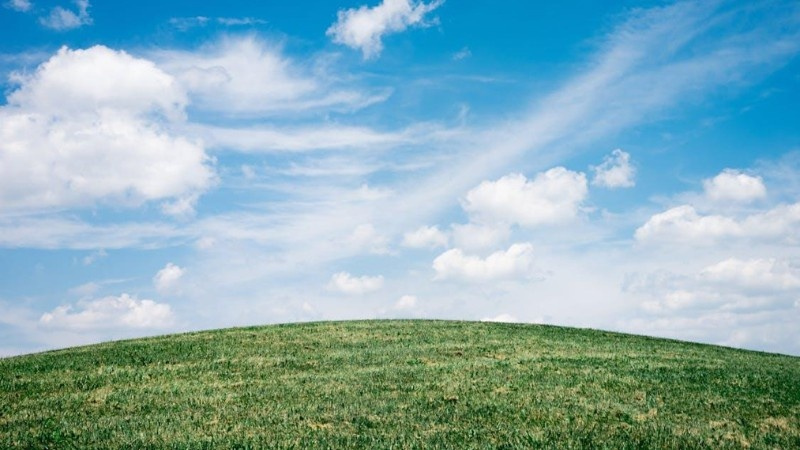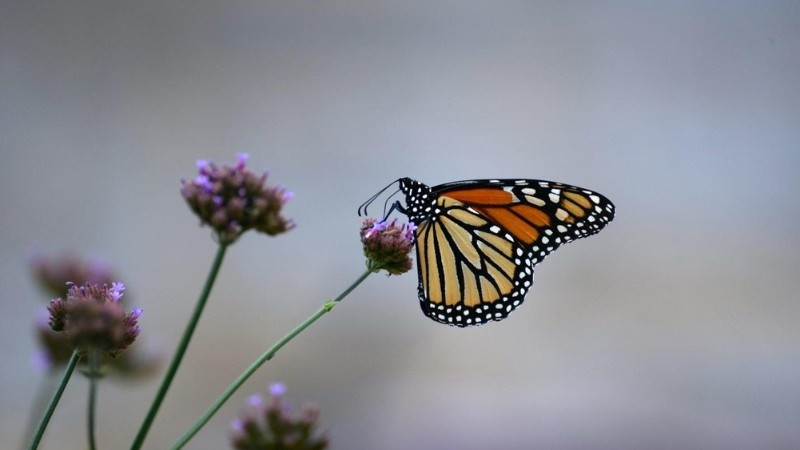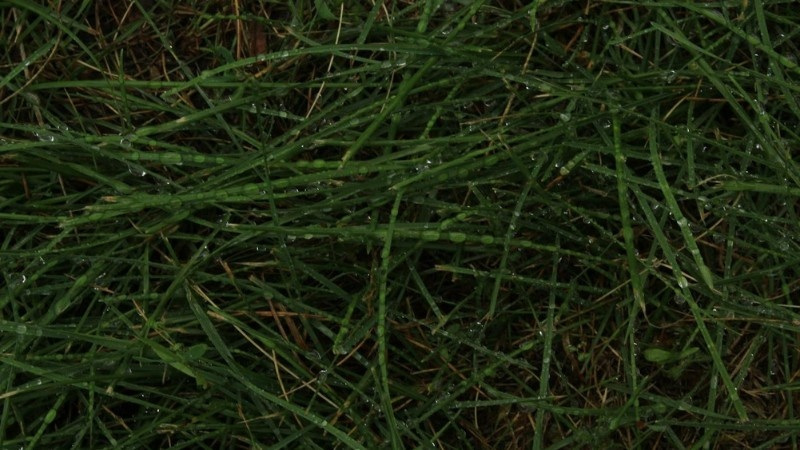It's Earth Day! 5 Ways to Grow a Greener Yard (the Eco-Friendly Way!)
Reading time: 6 - minutesWhat better way to celebrate Earth Day than by showing your yard a little green love?
Now, before you start picturing compost piles and solar panels, don’t worry—there are simpler ways to do your part. If you’ve got a yard, a hose, and a bit of pride in your patch of green, you’re already halfway there.
A few small changes to how you care for your lawn can actually help the planet and make your grass look even better.
Let’s roll up our sleeves and get into the five easy ways to grow a greener, healthier yard because here at Green Drop, green’s kind of our thing!

1. Water Smart, Not Hard
We get it. When the sun's blazing, and your lawn looks a little thirsty, it’s tempting to crank the sprinkler and let it rip. But overwatering does more harm than good (to your lawn and your water bill).
Remember that saving water doesn’t mean sacrificing that lush, green look. In fact, when you water smarter, your grass gets tougher and deeper roots.
Here’s how to water like a pro:
- Go deep, not daily. A good soak once or twice a week encourages deep root growth. Shallow, frequent watering just makes your grass lazy and weak.
- Water early in the morning. It reduces evaporation and gives your lawn time to dry before nightfall (which helps prevent fungal problems).
- Skip the sidewalk. Make sure your sprinkler is hitting the lawn, not the driveway.
- Use a rain gauge or a tuna can. Yep, just stick it on the lawn. Once there’s about an inch of water, you’re good.
- Aerate your lawn in spring and fall. This improves water absorption and keeps moisture at the roots, where it belongs.
- Consider installing smart irrigation. Such systems can reduce watering based on weather, saving time and reducing waste automatically.
2. Plants for Pollinators & Biodiversity

Want to turn your yard into a buzzing, fluttering paradise and cut down on wasteful practices? Say hello to native plants and pollinator-friendly landscaping.
Native plants, shrubs, and wildflowers support bees, butterflies, birds, and other essential pollinators. These little guys keep ecosystems thriving, improve crop yields nearby, and keep your garden blooming longer.
Here’s why it works:
- Native plants are built for your local climate, so they need less water and minimal upkeep.
- They also improve soil health, reduce erosion, and create habitat corridors that benefit the entire neighbourhood.
- Perennials return every year, saving you time, effort, and money. Once they’re in, they’re in.
Pro tip: Even a simple wildflower border or corner patch of native grasses can make a big impact. Start with a sunny corner, and nature will do the rest.
Consider swapping out a patch of high-maintenance lawn for something like:
- Milkweed (butterflies love it!)
- Bee balm
- Coneflowers
- Saskatoon shrubs or native wild roses
- Yarrow or goldenrod for extra colour and resilience
- Native grasses like blue grama or fescue
3. Mow with Intention
Here’s how to mow right:
- Raise the blades: Cutting your grass too short stresses it out and opens the door to weeds. Aim to keep it around 2.5–3 inches tall so it shades the soil, keeps moisture in, and grows deeper roots.
- Sharpen your mower blade: A dull blade rips grass, leaving it more vulnerable to disease. Sharpening once or twice a season keeps things crisp.
- Follow the “one-third” rule: Never cut more than a third of the grass blade at a time. It helps the lawn recover faster and stay green.
- Leave the clippings: Instead of bagging them, let them mulch right into your lawn. It’s free fertilizer—and one less thing to haul to the landfill (more on this later).
- Switch to a battery-powered or push mower: These alternatives are quieter, don’t produce emissions, and are much easier on the planet (and your ears).
- Mow during the cooler parts of the day: Early morning or late evening cuts reduce heat stress on both your grass and yourself.
- Change your mowing pattern regularly: Alternating your mowing direction helps prevent soil compaction and encourages more upright, even growth.
4. Leave the Clippings, Save the Planet

It might feel counterintuitive, but one of the greenest things you can do for your lawn—and the environment—is not bagging your grass clippings. Grasscycling (yes, that’s a real word!) is the simple practice of leaving clippings on your lawn after mowing.
Clippings break down quickly and return vital nutrients like nitrogen back into the soil, acting as a natural fertilizer. That means you can fertilize less often, reduce chemical use, and keep all that green goodness right where it belongs—on your lawn.
Not only does this save time and effort, but it also helps reduce the amount of organic waste that ends up in landfills. Did you know that yard waste makes up about 20%-40% of household waste during the summer months? Imagine the impact if everyone left their clippings behind!
Bonus points: mulching your clippings (instead of side-discharging them) keeps them tidy and helps retain soil moisture, which is key during those hot Western Canada summers.
5. Ditch the Chemicals—Choose Eco-Conscious Weed & Pest Control
Chemical-heavy treatments might promise fast results, but they often come at a cost—to your lawn, your pets, and the environment. Luckily, there are smarter, greener ways to keep your yard looking great without going full scorched earth.
Here’s how to go low-tox and still win the war on weeds and pests:
- Spot, don’t spray the whole yard. Green Drop uses targeted weed control where needed with approved, eco-conscious control methods that tackle broadleaf weeds while protecting your turf and pollinators.
- Enrich the soil, don’t douse it with toxic stuff. Many synthetic pesticides and herbicides disrupt the natural balance of soil microbes that support healthy root systems. By using eco-conscious treatments and organic amendments, you’re treating problems while nurturing the soil so your grass grows stronger and more resistant to future issues.
- Choose outdoor-focused pest treatments. Use treatments designed for outdoor pests only and those that avoid harming beneficial bugs like bees and butterflies. Stay clear of products that leach into soil or water.
- Go proactive, not reactive: Regular monitoring and preventive care reduce the need for aggressive treatments. The best defence against disease and infestations is a healthy, dense lawn that naturally keeps pests out.
- Think pet- and kid-safe: You shouldn’t have to worry about what your dog or toddler rolls around in. Eco-friendly products are made with minimal environmental footprint and safety in mind. That’s what we do best!
Earth Day Every Day Starts in Your Home and Your Yard
At Green Drop, Earth Day isn’t just a one-day event—it’s the heart of what we do all year long. We believe you can have a healthy, lush lawn without compromising the health of the planet.
That’s why our eco-friendly lawn care services are designed with the earth in mind. Whether you’re in Red Deer, Edmonton, Calgary, Winnipeg, Regina, Saskatoon, or beyond, we’re here to help you grow a greener, cleaner yard.
Let’s work together to make your lawn Earth Day-ready—today and every day. Book your lawn care package for the season.

